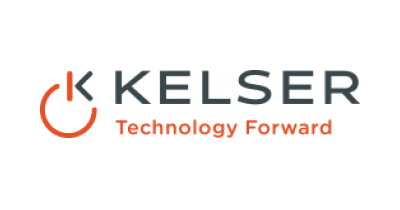Pros And Cons of Software as a Service (SaaS) For Businesses
Software as a Service (SaaS) has become widely adopted by organizations across industries and even the government as an easy way to streamline workflow and communications and increase productivity.
Also known as “on-demand software,” Software as a Service is a subscription-based software licensing and delivery service offered by third-party vendors.
Companies are using a growing number of SaaS cloud-based applications because they automate tasks, improve business efficiency, simplify communication, and make access to your important files available at the touch of a button on your desktop computer, laptop, tablet, smartphone, or other internet-connected device.
After reading this article, you will understand some of the key benefits driving the popularity of cloud computing as well as some of its drawbacks. With this information, you’ll be learn why SaaS apps are common targets of cyber attacks and how you can better safeguard your devices, data, and IT network from security threats.
What Are Some Of The Most Popular Saas Offerings And What Do They Do?
Organizations use SaaS software in many different business applications to handle a wide range of essential tasks, including email, calendars, document editing, spreadsheets, accounting, human resources, enterprise resource planning (ERP), customer relationship management (CRM), collaboration, and cybersecurity.
Some popular SaaS apps today include:
- Microsoft Office 365: Suite of Microsoft productivity tools, such as Word, Teams, Excel, PowerPoint, Outlook, and OneDrive
- Google Workspace: Suite of Google productivity tools including Gmail, Docs, Meet, Sheets, Drive, Calendar, and Slides
- Salesforce: Sales, customer service, and CRM platform
- HubSpot: Marketing, sales, and customer service CRM platform
- Slack: Business messaging, file sharing, and collaboration app
- Dropbox: File storage and sharing app
- Zendesk: Customer support management
- Zoom: App used for video conferencing, education, webinars, and business meetings
- Mailchimp: Email marketing
Key Benefits Of Using SaaS Applications
Streamlined business operations and increased productivity
SaaS applications can manage and automate important internal and customer-facing tasks for your business.
Ease of use
Cloud-based apps can be quickly and easily installed on your devices.
Unified business solutions
SaaS apps provide multi-functionality within a single platform. This saves businesses from having to choose from dozens of individual solutions to handle each business function.
Businesses also avoid the problem of then having to determine if all of the different resources they chose meet the security standards they need.
Compatibility within your IT landscape
SaaS software is designed to work with many different operating systems and can be installed on any number of internet-connected devices.
This ensures that authorized users including your employees, vendors, and partners can quickly and easily access and process documents, spreadsheets, programs, and other data. It also allows for ease of communication for both internal staff and external stakeholders.
Cost-effective
The subscription-based pricing of SaaS solutions can provide lower upfront costs when compared to traditional software licenses and renewal costs.
Cybersecurity features
SaaS solutions are developed with integrated security controls that can meet some regulatory requirements. So, just by using the apps, you inherit those security controls by default.
Data recovery
Since they are cloud-based, your business and customer information is stored on the cloud. That means if your laptop breaks, for example, you can usually just log on to another device and access the same data.
Automatic updates
SaaS vendors provide their own software updates to ensure you have the latest version with the newest features and bug fixes.
Related Article: Which Is Better Azure Or AWS? How To Choose The Right Cloud Platform
Main Drawbacks Of Using SaaS Tools
Despite the long list of conveniences and functionality SaaS software provides, it also comes with its own inherent challenges.
Compliance concerns
While most SaaS apps have built-in security features, such as encryption, not all of those features offer the same level of protections. Additional security measures may be required, depending on your business and industry.
Potential threat target
A SaaS app designed as a specific security tool, for example, allows hackers to infer which security controls the software does not protect against and exploit those potential vulnerabilities.
IT Infrastructure security
In the same way, businesses that use those SaaS security tools are simultaneously letting bad actors know that there’s valuable data stored within the software solution that businesses need to access.
This allows them to zero in on a potential opening in your IT infrastructure to access your data or launch a cyber attack such as malware or ransomware.
Internet dependency: Since these applications are accessed through devices that are connected to the internet, areas with spotty internet service can cause problems on the user end.
Bandwidth requirements
Since SaaS solutions are being used by many people within an organization, system updates may take longer to complete.
Outside of the app updates, businesses either need an existing internal team of IT professionals or an external managed IT company that can actively monitor and search for security vulnerabilities using “red team/blue team” practices for threat detection and response.
Limited customization
Depending on the app and vendor, businesses may have limited ability to tailor a particular app's features to meet their specific needs.
How Do I Safeguard My IT Environment While Using SaaS?
Given the sheer number and variety of SaaS solutions on the market today, businesses have to remain vigilant when using these apps to prevent a cyber incident or data breach.
Here are some ways to protect your data and IT systems:
- Use a holistic approach to security by developing a culture of security awareness within your organization.
In doing so, employees are more likely to follow simple, yet effective, security protocols such as using a lock screen when stepping away from your desk to keep sensitive data from being inadvertently exposed or recognizing and avoiding phishing attack scams.
- Implement endpoint detection and response tools to ensure that your devices are secure.
- Read the product manuals and disclaimers to understand what you’re getting.
- Whenever there are updates and patches available, install them on your devices.
What’s The Bottom Line With Using Software as a Service?
In today’s fast-paced economy, technology is in the driver’s seat. Software as a Service apps can provide affordable, scalable solutions for businesses to remain competitive in the marketplace.
After reading this article, you now have a better understanding of the benefits and disadvantages of SaaS applications. You also now know the importance of taking a holistic approach to data and network security when it comes to using cloud-based apps.
As with any technology solutions, it's important that your IT environment is continually monitored and updated to stay a step ahead of potential issues and security threats.
A managed IT service provider (MSP) can provide comprehensive, advanced monitoring, detection and response solutions to ensure that your business continues to run efficiently and securely.
However, we know that managed IT is not the right fit for everyone. If you do choose to partner with an MSP, be sure to do your research to find a provider who can best meet your specific IT needs.
How protected is your IT infrastructure? Not sure? Click the button below for your free cybersecurity checklist to learn where you have gaps and build in extra protections today.




